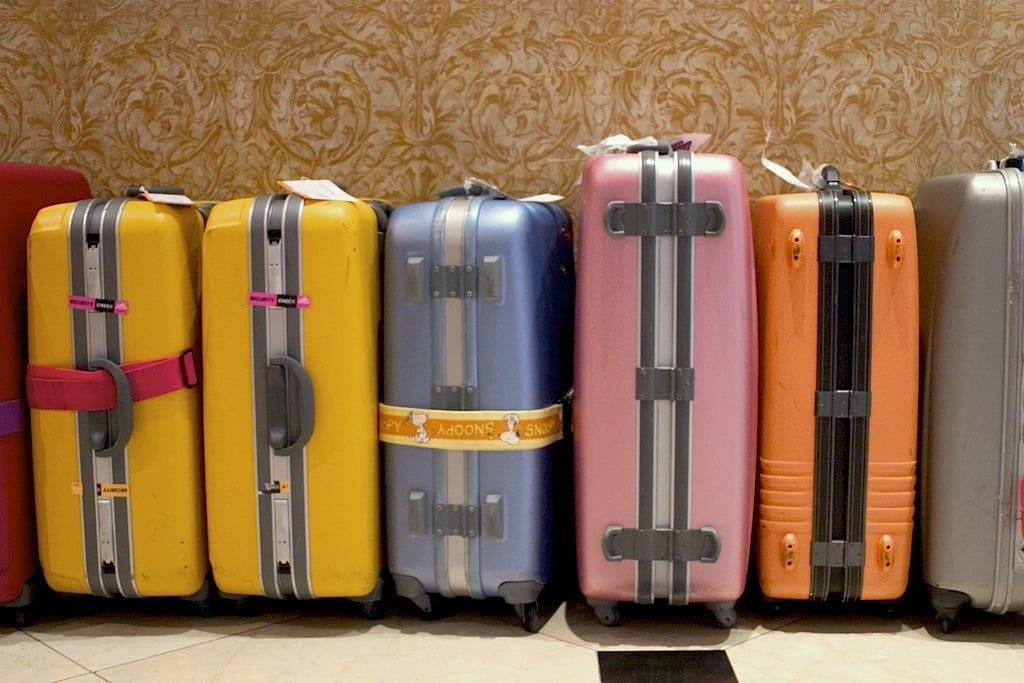What's really behind the decrease in lost airline baggage: Fees and fines

Skift Take
The largest airlines in the U.S. set a record in 2012 for their lowest annual rate of mishandled bags, but two factors behind the improvement may get overlooked: passengers are checking fewer bags, and airlines have to pay more per bag when yours is never seen again.
The DOT's Air Travel Consumer Report, issued today to cover the full-year 2012, found that the 15 largest carriers in the U.S. mishandled 3.09 bags per 1,000 passengers last year, compared with 3.35 in 2011.
Despite the rate drop, In reality these 15 carriers received 55,722 more mishandled bag reports in 2012 versus 2011, but there were nearly 60.4 million more emplanements.
That 3.09 rate is the lowest since the DOT began tracking lost bags in 1987.
Virgin America didn't report mishandled bags in 2011, but achieved the lowest rate among the 15 reporting carriers at 0.87 per 1,000 passengers in 2012.
American Eagle, a perennial leader in mishandled bags, notched the highest rate in 2012 at 5.8 mishandled bags per 1,000 passengers, although that was lower than American Eagle's 2011 mark of 7.32.
Here's the carrier breakdown:
| 2,012 | 2,011 | |||||
|---|---|---|---|---|---|---|
| Airline | Total baggage reports | Enplaned passengers | Reports per 1K passengers | Total baggage reports | Enplaned passengers | Reports per 1K passengers |
| Virgin America | 5,313 | 6,073,451 | 1 | * | * | * |
| Airtran | 33,844 | 21,384,197 | 2 | 40,401 | 24,721,745 | 2 |
| JetBlue | 48,346 | 25,731,611 | 2 | 52,454 | 23,711,065 | 2 |
| Delta | 205,943 | 98,072,571 | 2 | 254,210 | 95,445,093 | 3 |
| US Air | 105,730 | 49,350,915 | 2 | 129,140 | 47,857,988 | 3 |
| Frontier | 22,618 | 10,177,635 | 2 | 23,266 | 10,514,361 | 2 |
| Hawaiian | 26,021 | 9,032,567 | 3 | 22,244 | 8,455,059 | 3 |
| American Airlines | 198,501 | 67,869,244 | 3 | 242,695 | 68,350,420 | 4 |
| Alaska | 50,906 | 17,363,123 | 3 | 47,563 | 16,600,697 | 3 |
| Southwest | 355,149 | 115,413,258 | 3 | 413,538 | 113,258,197 | 4 |
| United** | 276,875 | 71,569,901 | 4 | 152,519 | 41,665,059 | 4 |
| Mesa | 36,416 | 7,788,981 | 5 | 42,649 | 8,748,648 | 5 |
| Skywest | 135,863 | 25,830,946 | 5 | 97,832 | 23,710,905 | 4 |
| Expressjet** | 169,566 | 30,743,315 | 6 | 79,444 | 14,389,994 | 6 |
| American Eagle | 105,564 | 18,211,607 | 6 | 122,978 | 16,798,134 | 7 |
| TOTALS | 1,776,655 | 574,613,322 | 3 | 1,720,933 | 514,227,365 | 3 |
Fewer checked bags, higher liability
Bill Mosley, a DOT spokesperson, says factors behind the improvements include a higher on-time arrival rate (81.85% in 2012), improved bag-tracking technology, fewer checked bags, and increased liability limits per lost bag.
Airline bag fees have led to a decrease in the number of bags checked by passengers, according to a recent GAO report, Mosely says.
"Airlines face potentially greater liability for lost baggage today than in years' past, giving them greater incentive to prevent baggage problems," notes Mosley. "DOT increases liability limits to match rising consumer prices, with a current limit of $3,300 per passenger, and international baggage liability limits were recently raised to approximately $1,742 per passenger."
The reduced rate of mishandled bags coincides with a global trend.
Fumbled handoffs on connecting flights
The total tally of mishandled bags decreased 20% globally in 2011, according to SITA's Baggage Report 2012, although screwed-up bag handoffs between aircraft and airlines accounted for 53% of delayed bags.
Failure to load a bag (15%) was the next highest factor, following by loading errors (13%), airport/customs/weather/space-weight restriction (7%), ticketing error/bag switch/security (5%), arrival mishandling (4%), and tagging errors (3%), according to SITA.
SITA states:
"If this trend continues, by 2020
transfer bags will represent over
60% of all delayed bags. This is an
issue that point-to-point carriers (the
majority of low cost carriers) tend not
to have, and is perhaps one reason
why they can boast lower losses than
the hub-and-spoke network carriers."
In another SITA report, Flying into the Future, released this week, SITA revealed that the most signifcant obstacle in a seamless transfer of bags is that airlines fall short in data-sharing.
"... The challenge will be for greater collaboration and improved data-sharing between all the stakeholders," SITA states.
In other statistics from the DOT Air Travel Consumer Report covering the 15 largest U.S. airlines in 2012:
- The on-time arrival rate of 81.85% in 2012 was the third highest in the DOT's 18 years of tracking the data, only bettered in 2002 (82.14%) and 2003 (81.96%).
- The 2012 cancellation rate was the second lowest ever (1.29%) while 2002 set the record at 1.24%.
- The DOT is investigating 16 tarmac delays (including 14 at Dallas-Fort Worth on Christmas during a snowstorm) of greater than three hours for domestic flights, and one tarmac delay for an international flight of more than four hours.




